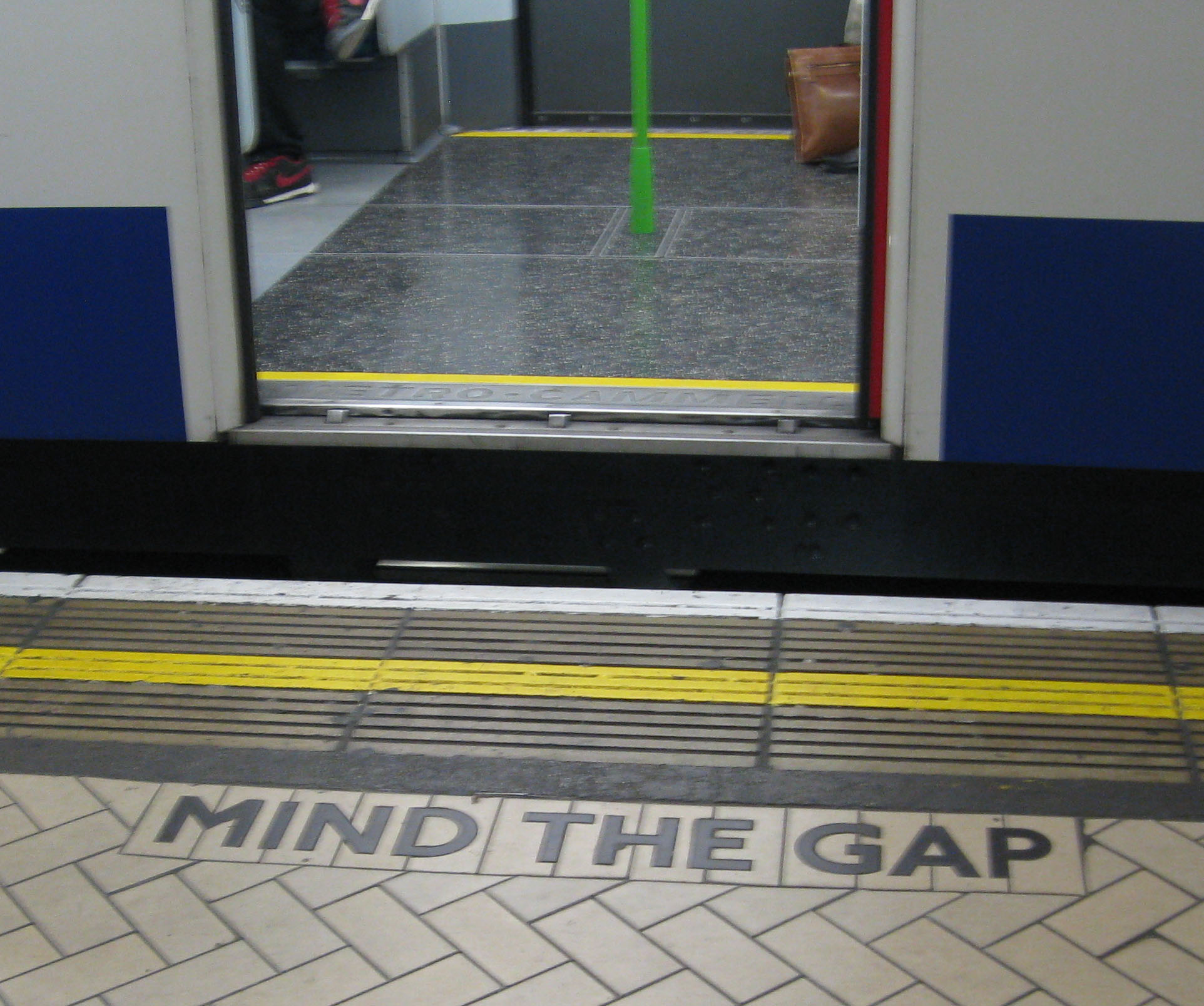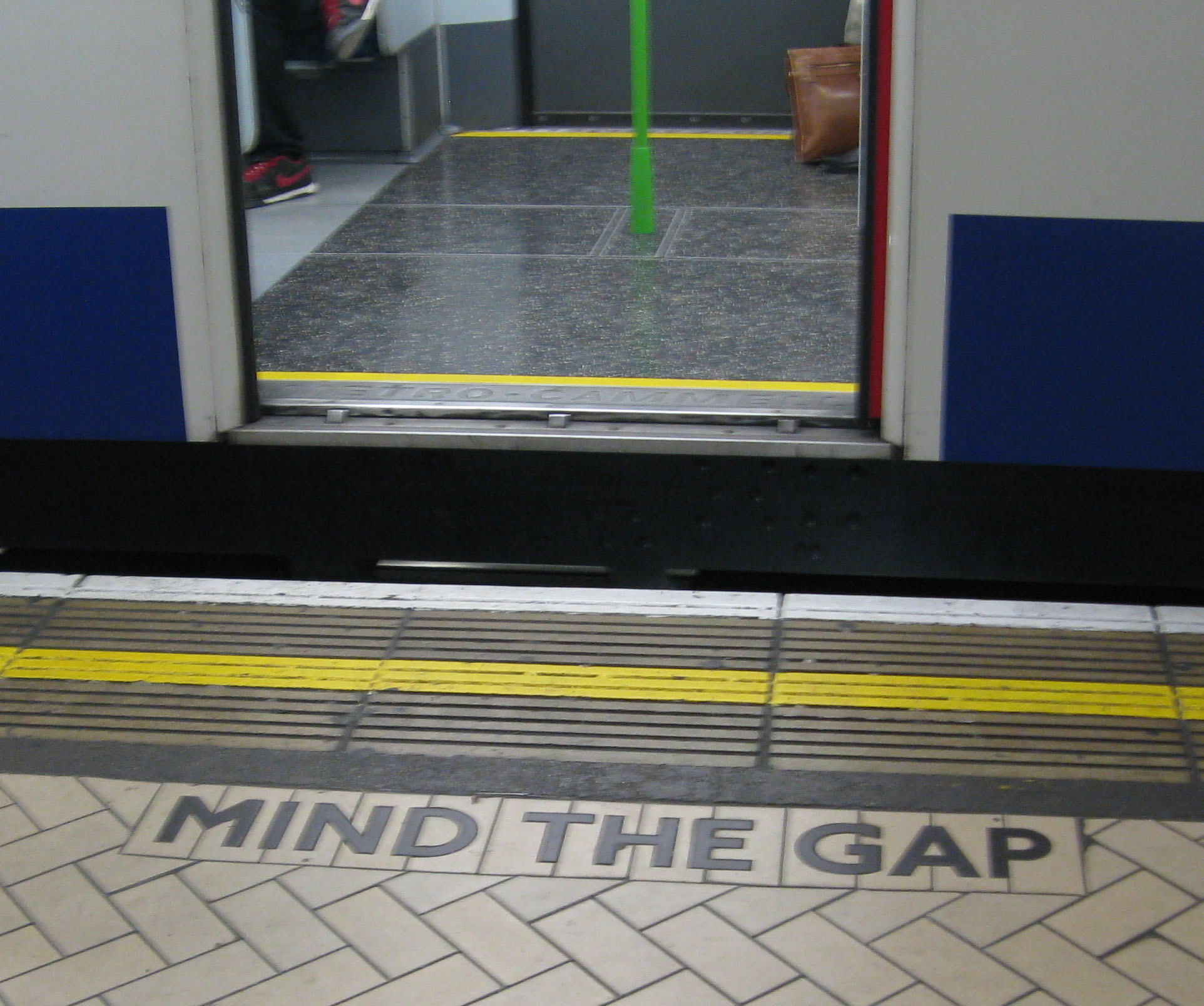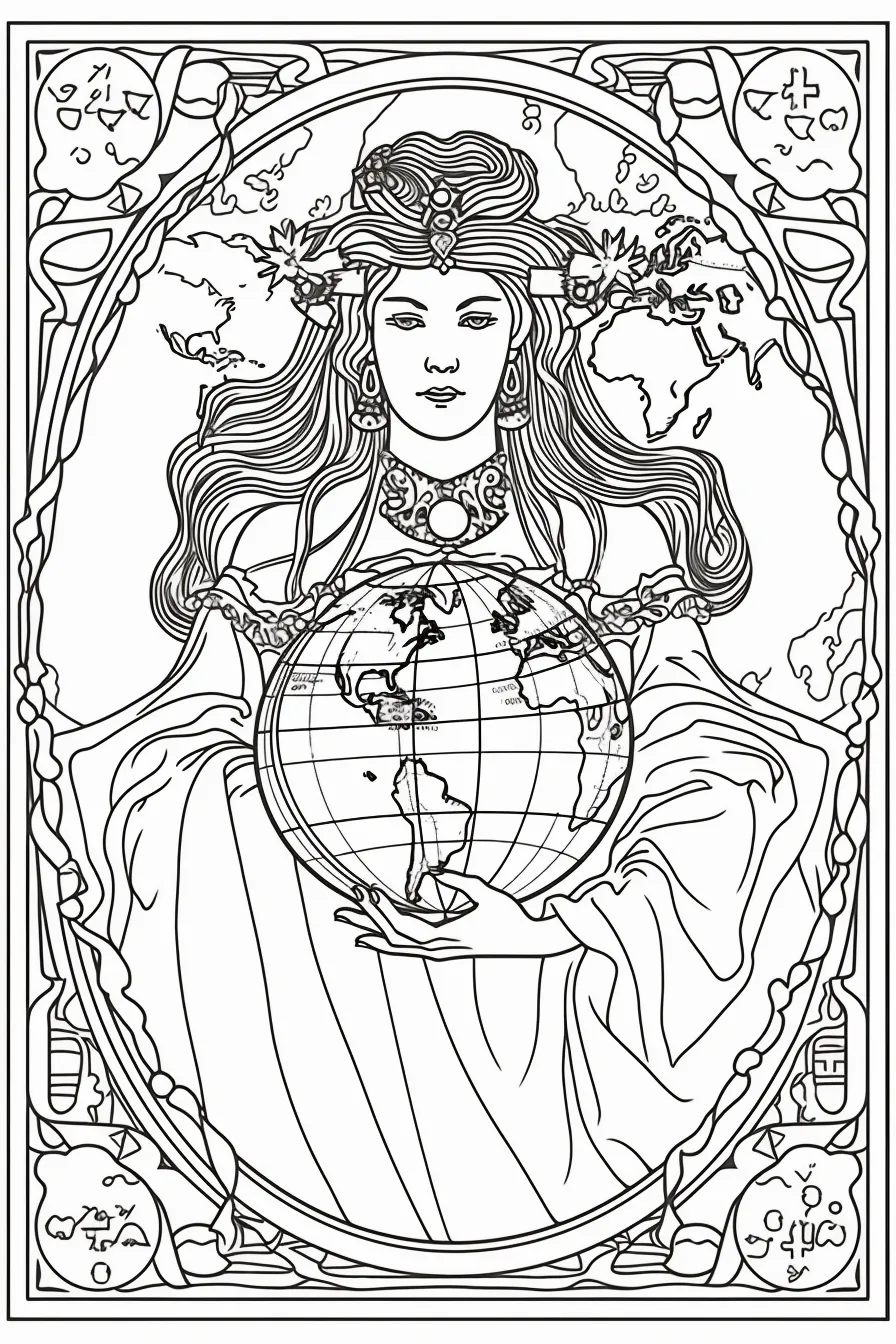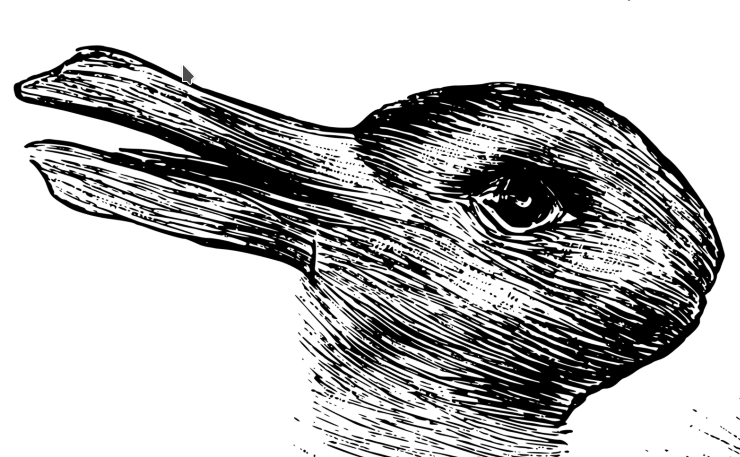
a sort of list, a list of sorts of the… —gap
This is the beginnings of a taxonomy of various gaps in knowing. At this stage an taphonomy of gaps is not expected, but it is possible that a phylogeny will arise out of it, an dit may reflect an epistemology, rather than an ontology, one way or another.
I'll add to it as I go.

"Mind the gap" shaped tiling on the District line platform at Victoria station, by WillMcC - Own work, CC BY-SA 3.0, https://commons.wikimedia.org/w/index.php?curid=4379199
- gap between subject & object:
- put first only because it drives many discourses in western traditions:-
- it is the gap between how the world appears to us and how we ourselves appear… to —us.
- possibly results from language users (self-conscious but language unconscious) mapping virtual non-subjectivities… —“out there”.
- we dont seem able to bridge from either side, even though it appears we have acess to both sides
- the gap does not mean they are actual separate 'things'
- put first only because it drives many discourses in western traditions:-
- Incompleteness/indetermincy/undecideable aporic “gaps” of systems developed by those in 1 (Gödel etc.)
- various paradoxes go here
- subjective gaps — constituted by compositional or constitutive bias but only percieved in others not the self 'subjected' to them (the 'subject' as an object to unconscious, subconscious or forgotten processes)
- notions of Pre-Homeric Greek attitudes to individual agency — all our actions are at the behest of gods’ interventions — is an interpretation of this reality.
- compositional “gap”s -- invert of 3 where the bias is a preference and acknowledged, indulged and promoted by reason of identity and/or group norming— constituted by being alive— this gap is a 'not-a-gap' type of gap.
- “Apparency” gaps: intuition and/or practice based awareness (mindfulness versus bias (3&4) or forced choice). Neologised here as “apparency” by the author trying to capture a neo-Pyrrhonian use of "apparent" and "not apparent", when suspending judgement (versus choosing to believe dogmatic answer/s to unknowns) This gap is a state of mind in active suspension.
- to repeat, this gap is held in mind, and not filled, see also below Mapping responses to the gap/s.
Gaps 3 & 4 are two side of the same coin.
Post-apparency gaps are less ‘meta’ and recursively trapped than paradoxes in a system, or aporia in mind. And thus perhaps more useful, practical, in that they assume, or ignore, the… —gap to get on with it. These gaps are thus 'simply' unknowns. Gaps can be seen as unknowns which we have given up on inquiring into, or feel is impossible to address.
Pyrrhonists may find solace in this moment by way of ataraxia.
Unknowns that may or may not gap
1. unknowns without context (unknown unknowns)
2. unknown within a context or framework
3. unknowns but in well-recognised gaps that have something that can be found out (I know I don't know, so let me try and figure it out. Evidence is missing but findable)
4. unavailable unknowns -- virtual -- (I know that "I don't know I don't know, but")
5. can I know this, can we know this?
6. what do I known? what have i fogotten?
Mapping responses to the gap/s
A gap is potentially viewed as an emotional landfill, one you can thrown anything into. Often practices or concepts like “reason” or "order" or "balance" or even "love"are used to justify throwing stuff into the gap, usually at the behest or urges and thus needs to maintain worldbuilding effort. Sometimes more primary inclinations like feeling or fear eggs us on, rather than more derivative, considered and doubled-down efforts.
We often live in ignorance of a great variety of gaps so it may well be revealing which gaps we throw stuff into and which gaps we do not acknowledge.
Thus, those gaps which are chosen to be filled will betray their dogmatic masters:
1. one empire or people of one truth and one leader (ratio of god to ruler to truth can vary across cultures instances) (God/emperor/narcissism)
2. faith in faith (Fideism) (double-down on the chosen gap filler)
3. devotion (personal relationship with gap filler: family, tribe, god-ruler)
4. abstract qualities like love, hope, or abyssal nihilism (pick one, the world is this one only)
5. any random practice (this is both miscellaneous, all of the above, except each of the above have their own social and politcal contexts for being chosen or forced on others in worldbuilding)
Dogmatically here means rashly and strongly held views, often forming doctrinal world-building over-determination. And regardless of whether the gaps are seen or felt to be One (gap), the final solution makes them all one gap (a monist practice).
Worlding is a non-doctrinal, non-doubling down, non-dogmatic worldbuilding.

Thus, gap-hunting is not really a process to find the gaps, and then to stand by and stare into the depths of a singularity, but to find what people prefer to throw into the gap when worlding/living/becoming. To see what they throw into the gap one must know where the gap lies.
This is a question of psycho-sociological inquiry rather than the psychological self-help practice of soteriology. Ataraxia is not an aim, whatever its occasion as a perceived benefit. This is why I am only Pyrrhonist-adjacent".
Why we should asks both why we should, and should we should?
We should things into the gap, and this is often a part of our worlding, also known as living. We live on regardless of these gaps, filled or otherwise, and even when we die because of some unknown thing, catching us unawares, the world goes on, so it does.
When we should things into the gap rashly, or with some sense of entitlement or entirety, then it is a world-building malformation. Shoulding should does not should it more better more.
See the organizer page for more on Posts on the… —gap.
Originally posted in April 2023 on substack.
